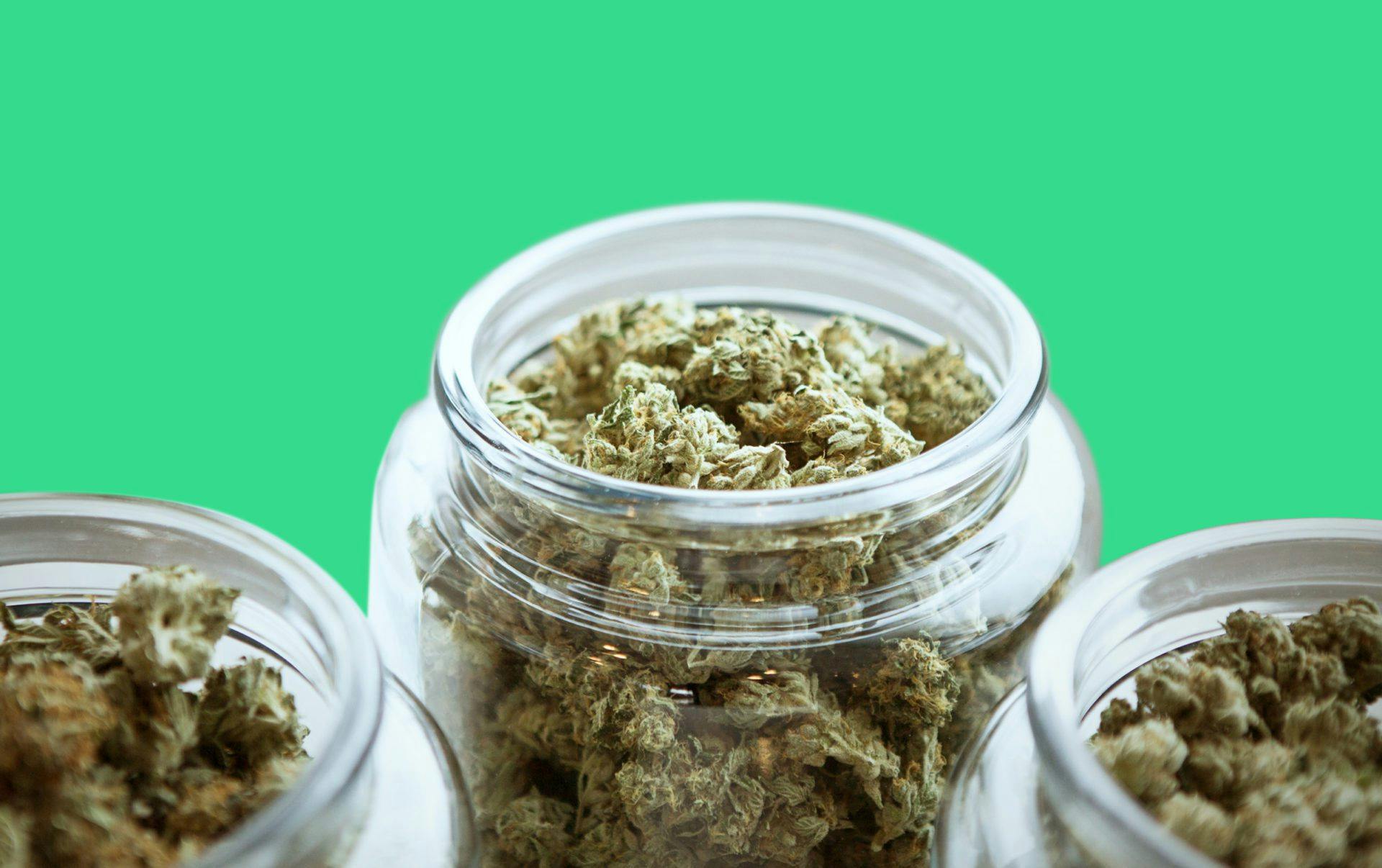Is ‘Weed Paralysis’ a Real Thing?
Last updated on Oct 7, 2024
Created on Mar 22, 2022

Article written by

Tina MagrabiSenior Content Writer
Content reviewed by

Dr. Lewis Jassey
An Australian tourist in Amsterdam reported being temporarily paralyzed after consuming a pot brownie. He attributed his inability to move for several hours to the cannabis edible he ingested. Should you be concerned about weed paralysis, and is it even real?
The tourist in question admits that he was advised just to consume a small portion of the brownie, but he ate the entire baked good. Still, his reported immobility and altered consciousness symptoms are effects to consider, especially for people new to cannabis.
Learn about what causes weed paralysis, how to prevent it, and what to do if it happens to you.
Get Your Medical Card
Connect with a licensed physician online in minutes.
Larger purchase limits Access to higher potency strains Save up to 40% on product taxes Enhanced legal protection
What Is Weed Paralysis?
Also known as pot paresis, weed paralysis involves the temporary inability to move the body’s muscles despite cognitive consciousness. During episodes of weed paralysis, a person may consciously want to get up out of bed but be incapacitated with muscle weakness. This muscle weakness tends to be painless but can be very frightening for the individual experiencing it.
Reported cases of weed paralysis bear a striking resemblance to hypokalemic periodic paralysis. This condition typically begins in childhood or adolescence and leads to a temporary inability to move the arms or legs. The duration of muscle paralysis in hypokalemic periodic paralysis could be hours or, in rare cases, days. While people are experiencing this type of paralysis, their blood potassium levels tend to drop, although scientists don’t yet understand why.
Was the Australian tourist in Amsterdam experiencing true weed paralysis, or was he having an episode of hypokalemic periodic paralysis? Without knowing his medical history and other pertinent factors, we cannot be sure. For example, certain drugs like diuretics can sometimes trigger an episode of hypokalemic periodic paralysis by lowering potassium levels.
The phenomenon of “weed paralysis” or “pot paresis” are given such informal names, being a rare effect with only anecdotal reports, suggesting that it is not necessarily a huge concern for most people. The symptoms associated with weed paralysis may also be mistaken for other conditions like myalgic encephalomyelitis (chronic fatigue syndrome), for which medical marijuana use may be helpful.
It is likely that a person experiencing “weed paralysis” is having an unpleasant reaction to too much tetrahydrocannabinol (THC), which can cause over-intoxication. An excess of THC can have potent sedative effects, particularly if edibles were the method of consumption.
Due to individual differences in a person’s endocannabinoid system (ECS), they may metabolize THC more slowly and/or differently, and so could experience a sustained effect. There is not enough research on “weed paralysis” to know what causes it, or even if it’s being mistaken for another health problem, so we ought to be careful of perpetuating the idea of it being a problem when we do not have the proper science or terminology to describe it accurately. A more accurate name could simply be a “hypokalemic period” or “THC over-intoxication.”
What Causes Weed Paralysis?
You may be more likely to experience weed paralysis if one or more of the following factors is true:
- You have consumed a marijuana edible with high levels of THC. The effects may be especially pronounced if you finish the edible quickly without allowing time for your body to metabolize and process everything properly. Carbohydrate-rich meals are also implicated in hypokalemic periodic paralysis, and cannabis edibles are usually carb-heavy (brownies, cakes, etc.)
- You are recovering from a virus, as viruses can trigger hypokalemic periodic paralysis in some people.
- You exercised vigorously before consuming cannabis and then relaxed or tried to take a nap.
- You have consumed cannabis in conjunction with other medications. Cannabis does not mix well with many prescription and over-the-counter medicines, so exercise caution and speak with your physician.
However, weed paralysis is very rare, and the above factors will likely not cause muscle paralysis in most individuals. The above factors can precede a negative experience with cannabis, so careful dosing and other safety measures are crucial.
How to Prevent Weed Paralysis
There are several ways to prevent weed paralysis from happening to you. Here are our best tips for having a safe experience with cannabis:
Start Low, Go Slow
Start at a very low THC dosage (no more than five milligrams for beginners, although some would recommend even less at around 2-3 mg) and consume slowly. Be particularly cautious with edibles, which can produce more potent effects than inhalation or tinctures. Avoid consuming more cannabis if you don’t feel the effects right away. Underestimating the timeframe of the effects of cannabis is one major reason why people over-consume and, consequently, have a negative experience.
Download Free Guide to THC
Choose the Right Consumption Method
There’s no question that eating too many marijuana-infused edibles are the culprit in many people’s negative experiences with the plant, but this doesn’t mean that it doesn’t have its uses when dosed appropriately and with care, especially for people who require the longer duration of effects edibles can provide.
Consider using soothing marijuana or CBD topical rather than eating a cannabis-laced cookie for those with a skin problem. Many also find cannabis tinctures helpful, as it is easier to dose via the dropper and has a quicker onset of effect than edibles (30-45 minutes vs. 1-2 hours). These ingestion methods may be more appropriate for what you’re seeking.
Use a CBD Only Product
While CBD can have psychoactive effects, these effects are usually not as intense as those experienced with THC. If you’re new to using cannabis or haven’t yet obtained a medical marijuana card, you could start by trying CBD isolate products like gels and creams to see how your body responds.
After you become comfortable with CBD isolate, you may like to progress to full-spectrum CBD products that contain trace amounts of THC but not nearly enough to intoxicate you. This may help you gauge how sensitive you might be to other cannabinoids and terpenes in the hemp or cannabis plant.
Download Free Guide to CBD
What to Do If You Have Weed Paralysis
If you feel you are genuinely unable to move after consuming large amounts of cannabis, perhaps the best thing to do is to relax and be somewhere comfortable. Stay near a sofa or bed when consuming cannabis if you have the sudden urge to fall asleep. Also, if it is of psychological help, try to remember that you are not necessarily “paralyzed” because of your cannabis consumption – you just may not want to move because you’ve had a little too much THC!
Above all, start low and go slow. You can always take a bit more cannabis, but you cannot undo what you have already consumed. Only time will do this.
Consume cannabis responsibly with a medical marijuana card. The physicians at Leafwell are here to meet with you virtually and start you on your path to obtaining an MMJ card in your state.
Get Your Medical Card
Connect with a licensed physician online in minutes.
Larger purchase limits Access to higher potency strains Save up to 40% on product taxes Enhanced legal protection


